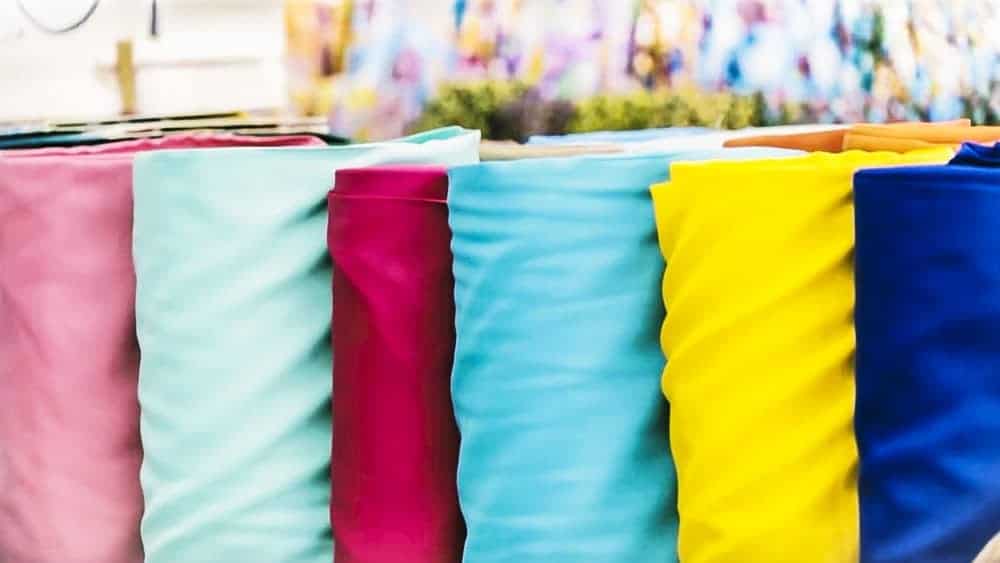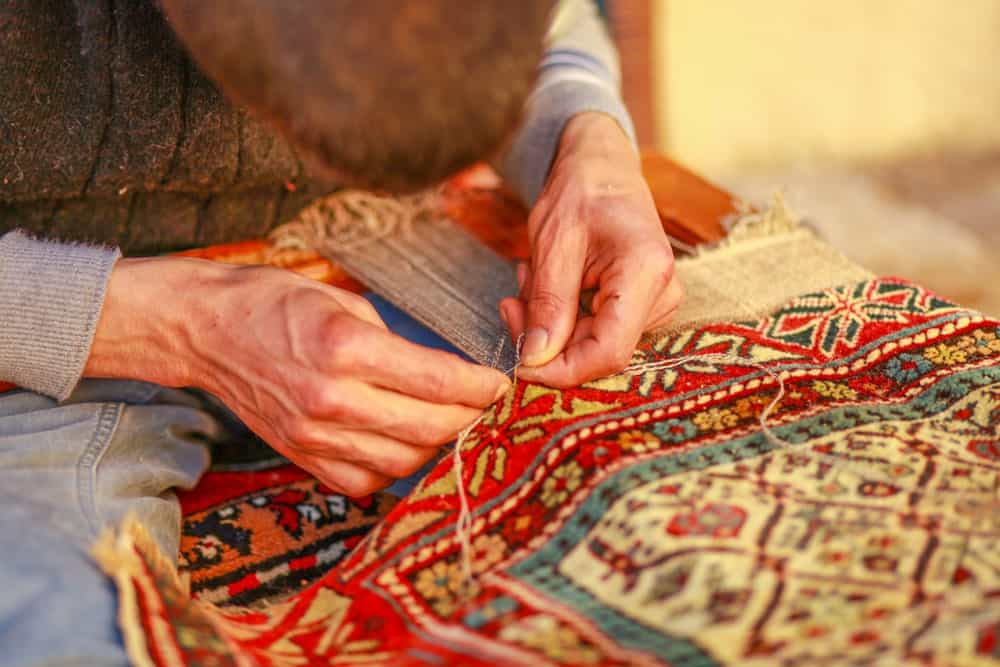Stretch fabric. The possibilities of what you can make with it are virtually limitless. Plus, it's easier to work with than you might think. Learn about the many different types of stretch fabric, as well as tips for using elastic material to make reative additions to your warrobe.
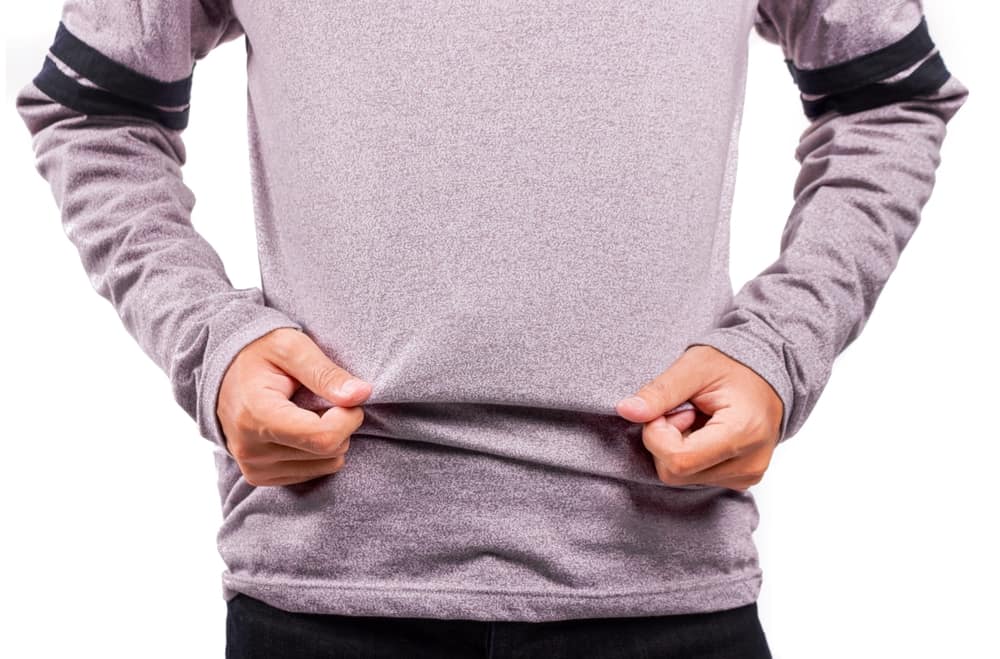
Whether you want to discreetly accommodate a few extra pounds or show off your toned physique at the gym, clothing made from stretch fabric can really come in handy. I didn’t buy much in the way of stretch clothing until I was in college.
Some friends asked me to go to Target with them on a sleepy Saturday. I needed a comfortable pair of jeans for an upcoming Habitat for Humanity project I had signed up for, so even though I’m not a big shopper, I went along.
I perused the jeans selections until I finally found a cheap pair that I liked. I was a little surprised to see that they were the stretchy kind. I thought you could only get gym clothes and larger sizes in that style. But these jeans were on the small side. They were definitely good to have on a trip where I was doing a lot of climbing — on ladders and rooftops — and crouching in small spaces.
By the end of the week-long Habitat project, those jeans were covered in paint spatters. But they were so comfortable I kept them for years, if only for lounging around the house.
If you’re interested in fashion or want to try sewing stretch fabric to make some additions to your wardrobe, here’s a rundown of the different types of stretch fabrics, and a few tips on how to work with them.
Contents
Types of Stretch Fabric
Spandex
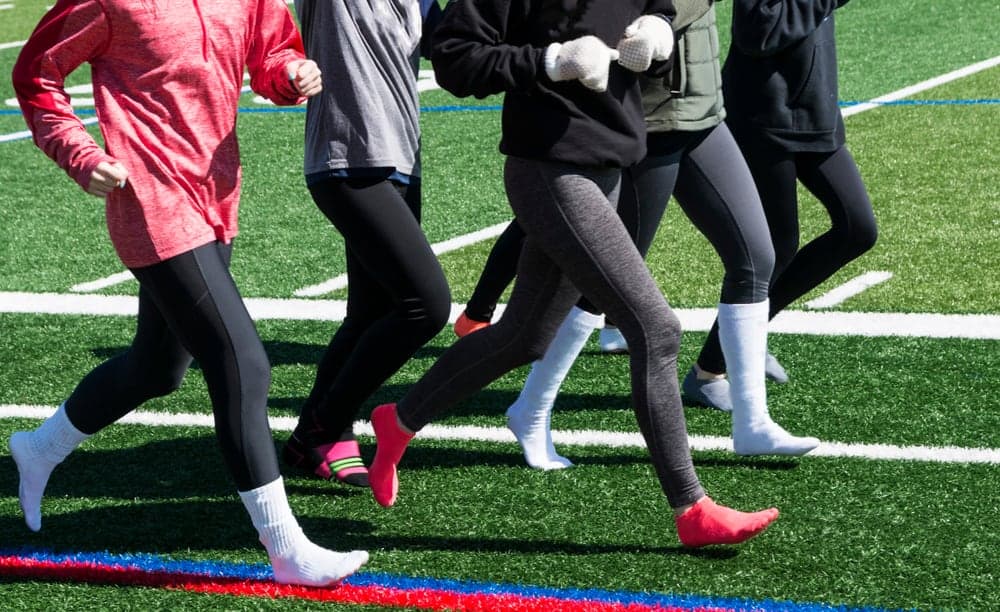
Spandex fabric is the material we’re probably most familiar with. It took the textile industry by storm, due to its unprecedented ability to stretch (as much as 5-8 times its normal size). Just how much it can stretch depends on its elastane content. For most spandex comfort wear, its elastane content ranges from 1-5%. In athletic wear, that number goes up to 12-15%.
Some people get spandex confused with Lycra fabric or consider them to be one and the same. I always thought spandex started out as a brand name, but it’s actually an all-encompassing term for any fabric that stretches to the max and has elastic. Spandex is made with a base material — wool, cotton, or nylon — and elastic. Lycra is a type of spandex material.
Spandex Blends
When spandex is blended with other fabric fibers, it enhances their elasticity — anywhere from 2-20%. Various types of spandex blends include:
Cotton Spandex Blend
This material is known for its smoothness. It usually contains 3-5% spandex. Because it can stretch in all four directions, it’s versatile enough to be used in skirts, dresses, and tees.
Sometimes, synthetic fibers are combined with Lycra to make materials called slinky knits. These are usually named according to the main material they’re constructed with, so you can have cotton slinky knits, too.
Nylon Spandex Blend
This is usually used for all kinds of activewear — sports bras, swimsuits, and more. In fact, cycling champions wear this material a lot, so you’ll probably see a good selection of it the next time you watch Tour de France. Most stretchy nylon blends are 15% spandex. However, with certain fabrics called Tricot and similar names, the fabric is anywhere from 25-50% spandex.
Rayon Knit Spandex
Rayon spandex is so smooth it feels like silk. While it makes for a highly form-fitting material, it’s also incredibly comfortable. One type, in particular, bamboo rayon, feels especially smooth against the skin.
Other spandex blends include synthetic fabric types, too:
- Modal
- Tencel
- Linen
- Acetate
Polyester Spandex Blend
It’s amazing how many articles of clothing are made, at least in part, from polyester. This inexpensive material can even be blended with spandex. Because it’s so lightweight, it’s a popular choice for sewing leggings, costumes, and dancewear.
People also like working with polyester spandex when they want to sew something that looks like it’s made of leather. (There’s even a polyester-spandex blend made for furniture. It has a foam backing, so you wouldn’t want to use it for clothing. Unless maybe you were making a most unusual costume).
Stretch Denim
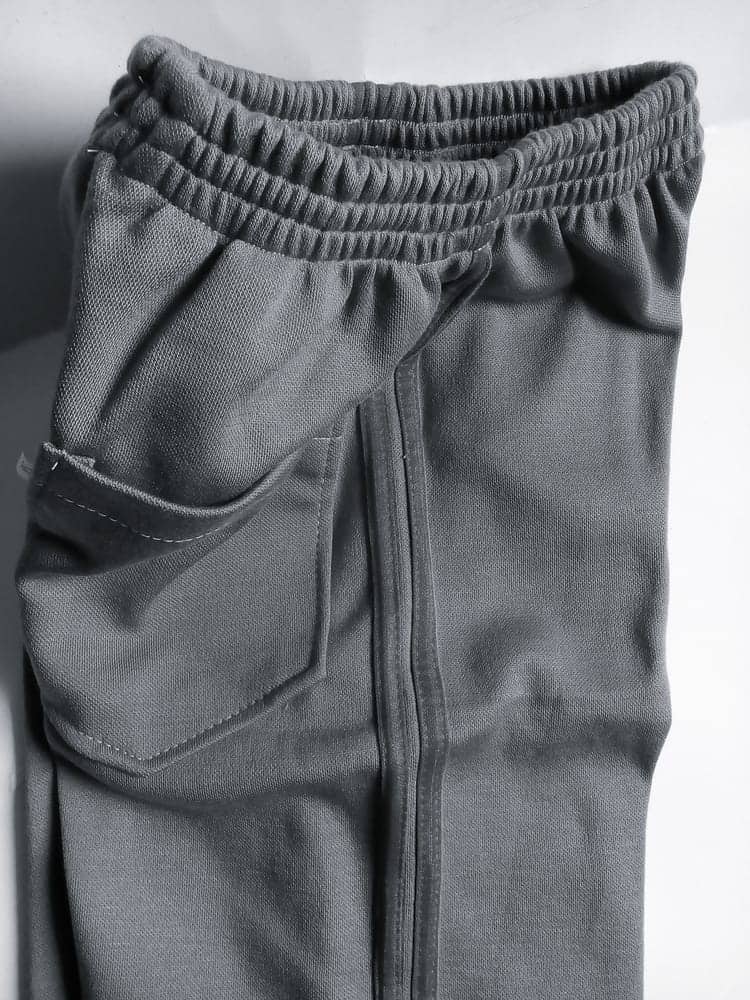
Remember those jeans I mentioned at the beginning of this article? They were made of this material. It’s a combination of spandex, cotton, and polyester. Stretch denim is often used for fitting jeans, dresses, and skirts.
Faux Leather/Vinyl
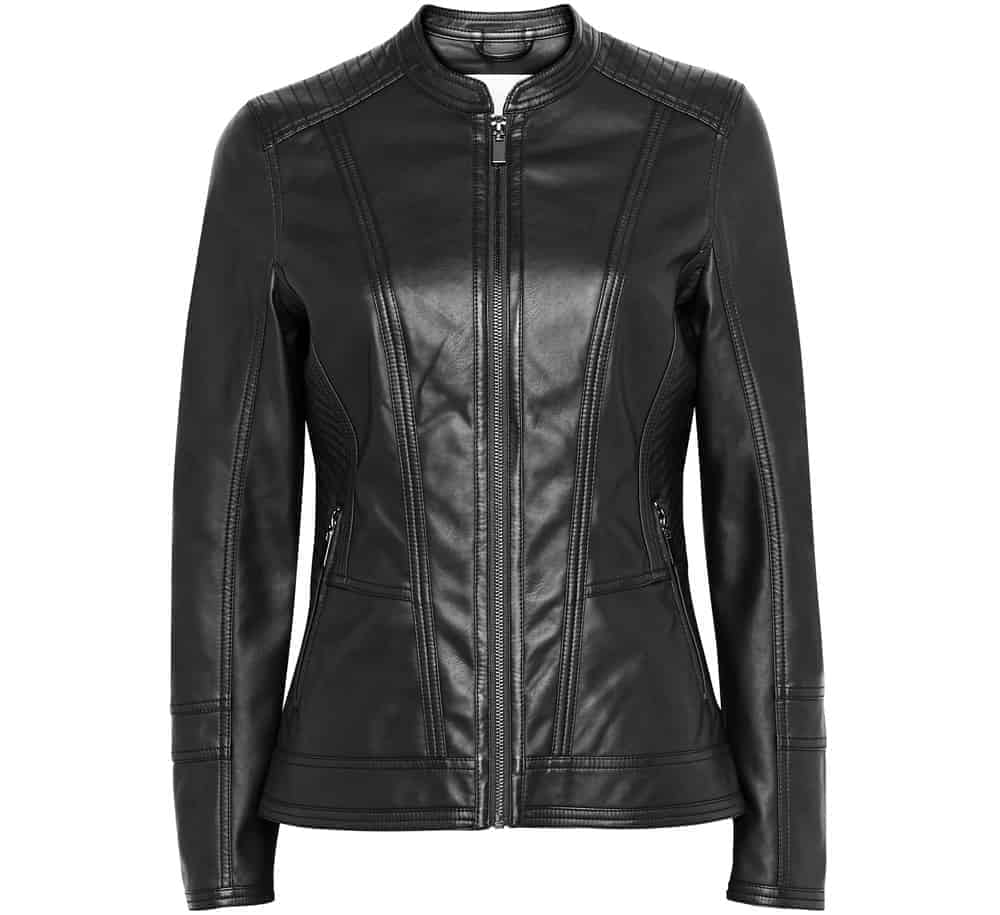
This material is made from synthetic fiber and is often used to make furniture that looks like real leather. When it’s used for apparel, it’s a good choice for accessories like belts. Sometimes you’ll find faux leather shirts and vests, too.
Cotton Poplin Stretch

This material only has about a 10% stretch. But it’s still really comfortable. Many a shirt has been fashioned from this fabric, which is made of cotton, spandex, and — you guessed it — poplin.
PowerNet
This is a fabric many people are unfamiliar with, probably because it’s mostly used for making underwear. As its name suggests, it has the consistency of netting, with a good amount of elastane fibers mixed in. You can stretch it in all directions.
Stretch Lace
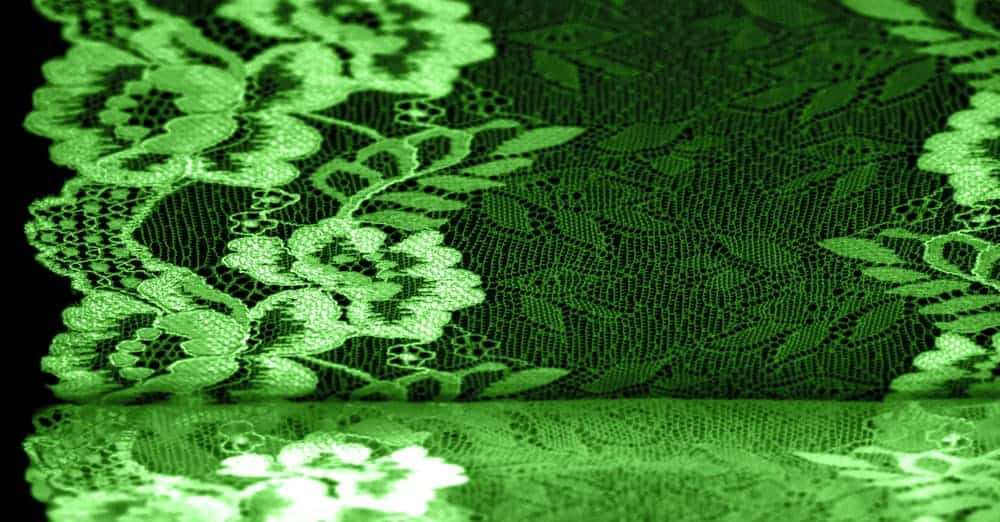
You can do a lot with lace when you have the stretchy kind. As you might expect, this material is often used in lingerie and evening wear, dresses, skirts, and fitting blouses. It’s not unheard of to find stretch-lace leggings, too. This fabric is woven from elastic and synthetic threads.
Stretch Satin
With its lustrous appearance, this material is highly sought-after to achieve a more elegant or sophisticated look.
Stretch Velvet
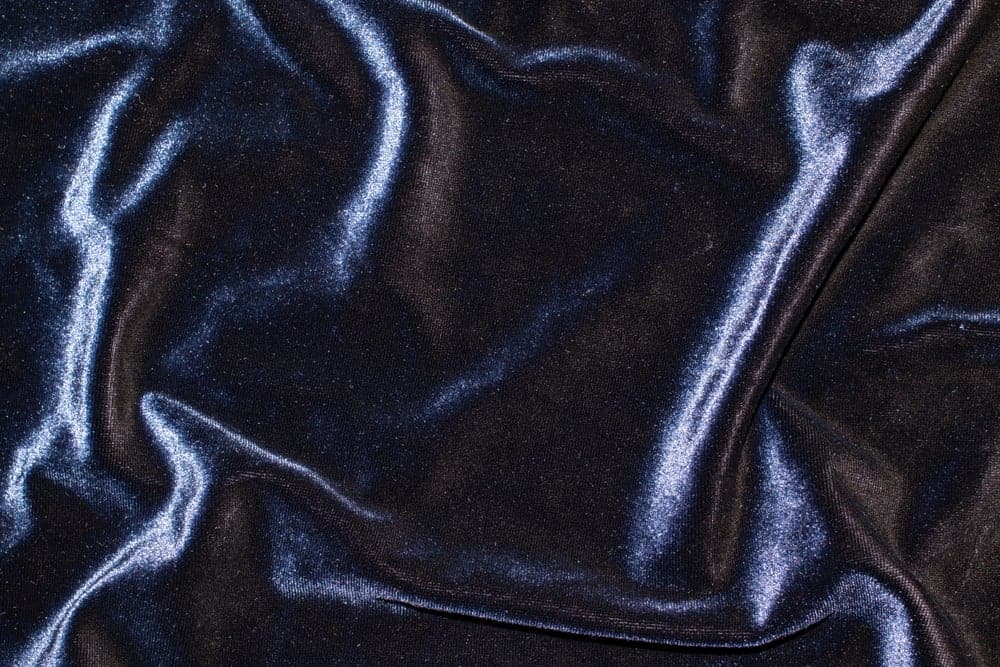
Like stretch satin, this fabric also has a lustrous look, making it a frequently-chosen material when people want to make costumes. It has a napped surface and about a 15% stretch, so it’s ideal for dancewear, too.
Knit Fabric
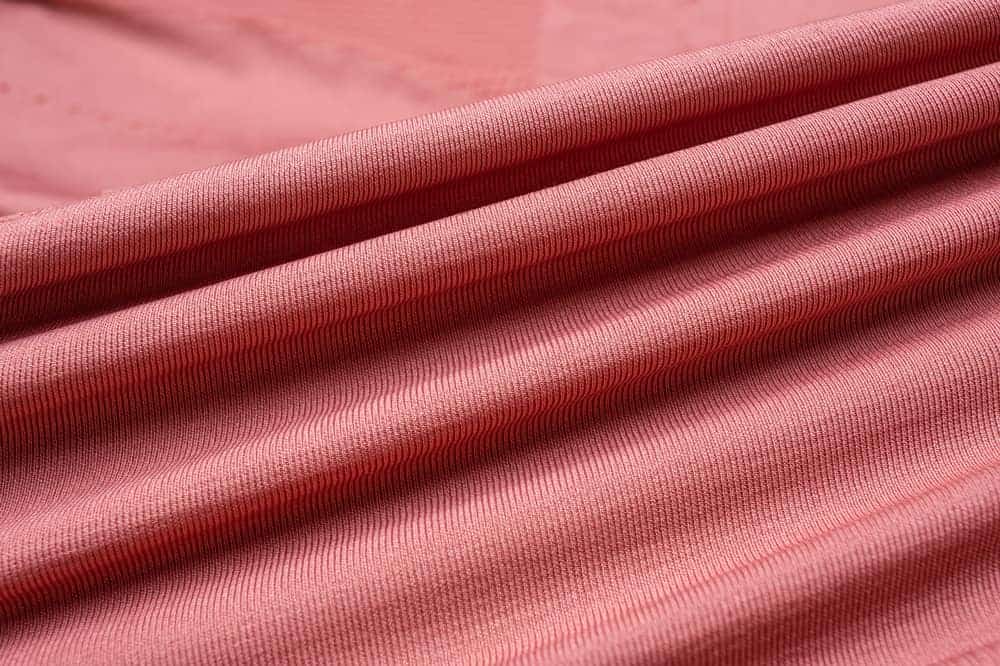
Most knit fabric has some “give” to it, usually in the form of a 2-way stretch (more on that after we cover all the fabric types). Because they’re somewhat stretchy, knit fabrics are among the most popular for sewing all kinds of apparel. Here’s a quick breakdown of the specific types of knitted fabrics you’re likely to come across when you’re choosing material for your next sewing project.
Woolen Jersey Fabric
This knit fabric is sometimes knit together by hand using wool yarn. It can also be machine-made. This material can be difficult to work with because as soon as you cut it, it starts to unravel.
Jersey Knit
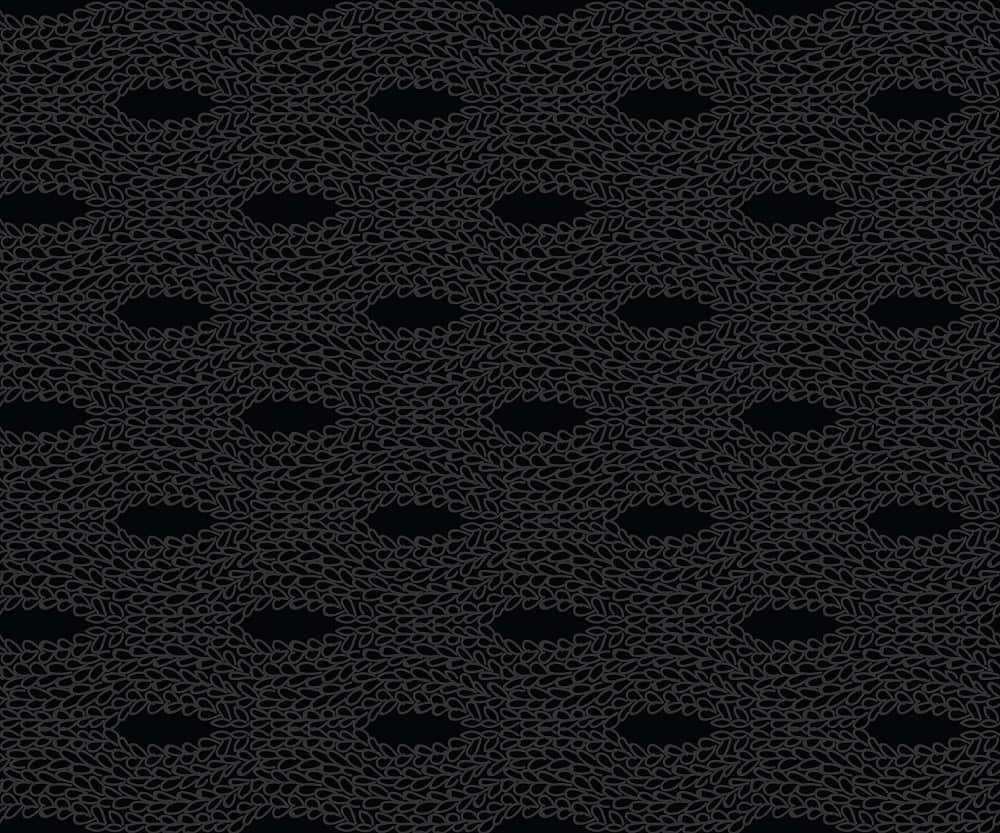
Jersey is extremely comfortable to wear, so it’s no wonder sewists use it as their go-to material when making T-shirts. This light to medium-weight fabric is common in sportswear (team jerseys) and other casual attire. Jersey has a smooth surface and drapes over the body, so it’s not especially form-fitting.
Knitted Material for Dresses
If you’re looking for stretchy material for dresses and skirts, consider knit fabrics such as:
- Sweater knit
- Silk jersey
- Cotton jersey
- Silk mesh knits
- 3×3 rib knit
- Double knit rayon blend
- Bamboo jersey
- Interlock twist jersey double knit
French Terry
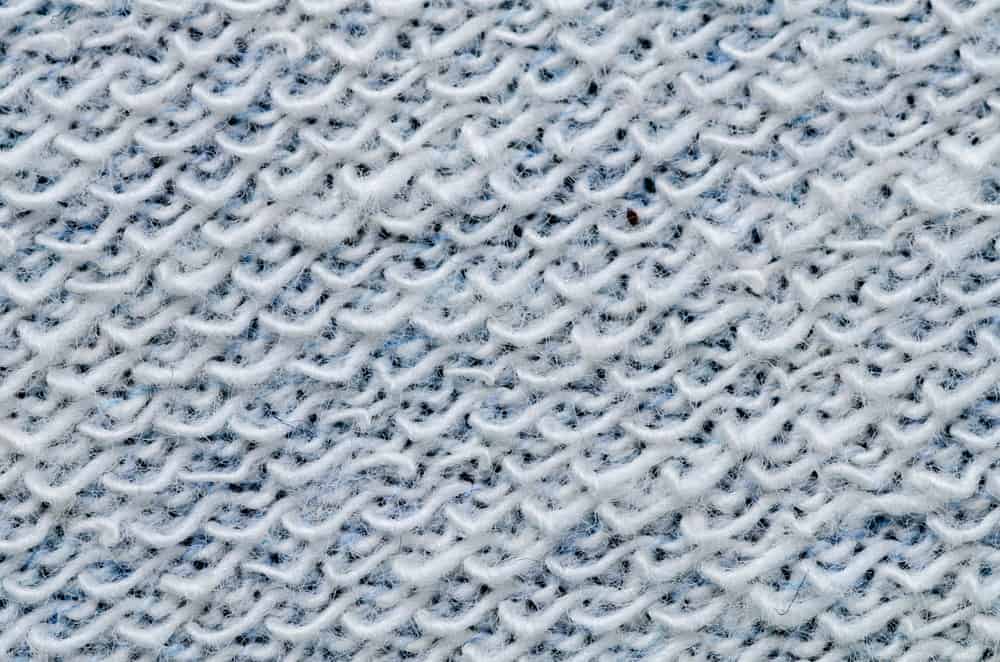
French terry is a type of knit fabric that is somewhat stretchy. This is the material many sweatpants and hoodies are made of. This soft fabric is comfortable and simple to clean. Since it’s low-maintenance, it’s a go-to for making lounge-wear. And since it’s a middle-weight material, it’s relatively easy to work with.
Rubber/Latex

You can use rubber to make a limited selection of clothing. This material is difficult to put on and not the most comfortable to wear, even though it’s stretchy. But it’s water-resistant, so it’s good for articles designed to keep you dry in rainy conditions or underwater.
We see it a lot in medical facilities, too. When rubber comes in direct contact with your skin, it can definitely be irritating — not to mention the fact that some people are allergic to latex. Another reason you don’t see many clothing items made of rubber is that the material is extremely difficult to work with.
Another disadvantage of rubber is that you can’t dry-clean it; doing so will damage its rubber corn yarns.
Neoprene Rubber
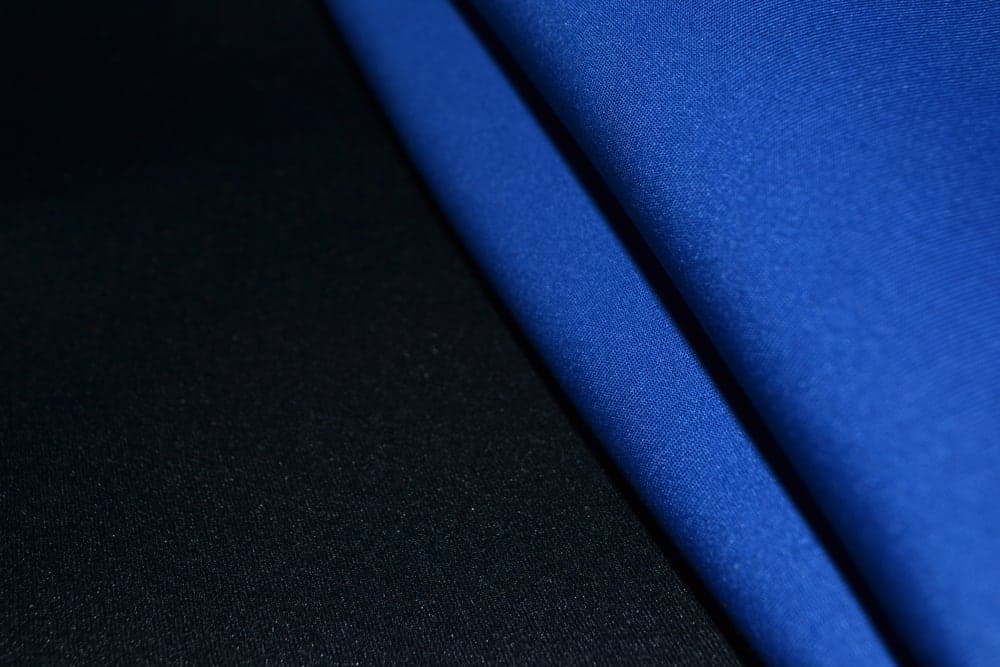
Many items — from clothing to electronics cases — are made of neoprene rubber. This substance is not actually rubber; just a synthetic polymer that closely resembles it. It comes in a variety of thicknesses, and while it’s most often used in scuba divers’ wet suits, garment-makers are incorporating it into many other articles and accessories.
More Than One Way to Stretch
When it comes to how elastic fabrics stretch, there are actually two types. Four-way stretch fabrics stretch in both directions lengthwise and both directions crosswise. There are also two-way stretch fabrics, which you can pull in two directions lengthwise or two directions crosswise, but they won’t stretch in all four directions.
Sewing Stretch Fabric 101: The Ultimate Beginner’s Guide

Here’s some terminology, as well as some tips and tricks, for sewing with elastic fabric. Working with these materials isn’t as difficult as you might think. Want to know the best stitches to use when you sew stretch fabric? Here’s the list, along with some pointers on how to set your sewing machine to make the stitches.
- Double-needle stitch. (Also called a twin-needle stitch).
- Narrow zigzag stitch. If you’re using this stitch, choose a narrow setting on your machine. The length of the stitch should be equal to its width. With this technique, on the right side of the fabric, there should be two parallel rows of stitching. On the wrong side, the bobbin thread forms a zigzag pattern.
- Straight stretch stitch. This straight stitch resembles three rows of straight stitches, all parallel to each other.
- Dual presser foot. On your home sewing machine, you can try a walking foot attachment or dual-feed foot. This will prevent the material from stretching out as you sew. Check the owner’s manual for your sewing machine to see which attachments are compatible before you purchase one.
Sewing Buttonholes in Stretch Fabric
If you need to put buttonholes on a stretchy garment, it will be easier if you sew in the direction of least stretch. As you might expect, this can be a little challenging with material that has a four-way stretch. Test it first, stretching on all sides to see which has the least “give.”
Use fusible interfacing to stabilize the wrong side. This should give you the best results, so you can make buttonholes that are lined up correctly.
Other Things to Know About Working with Stretch Fabric
- Pre-wash the fabric before sewing. Leave it to dry for a day and make sure it stays flat so that it can keep its shape.
- Be sure you have the right material for the garment you want to make.
- Use the right sewing machine needle. Sewing can be much more of a headache if you’re not using the right needle. You’ll need a specific type — either a stretch needle or a ballpoint needle — when you’re crafting with stretchy fabric. A ballpoint needle gets its name from its round tip that pushes the material away while sewing. This keeps the needle from damaging the elastic material.
- Use the right thread. While you don’t need a “special” stretch thread just for elastic fabric projects, there is one you shouldn’t use in this case: cotton. Cotton thread is likely to break when stretched and pulled. Instead, try polyester thread. It usually has enough resistance to keep up with your elastic fabric.
- Use the right stitches. You’ll want to use stitches that allow your fabric to maintain its stretch. Otherwise, your apparel won’t have much of a shape.
- Cut the fabric carefully. Knowing how to cut your material is especially important when you sew stretchy fabric. Lay it on a flat surface, and don’t let any of it hang over the edges. This helps to ensure it doesn’t slip out of place while you’re making your cuts.
- Pin it. Smooth, stretchy fabrics are especially likely to move around. To prevent this, pin it to your pattern and cut out the pieces using a sharp pair of scissors. Another option is to use paperweights to hold the fabric in place while cutting out the sewing pattern with a rotary tool.
- Pin within the seam allowance. If you’re pinning the fabric, be sure to keep those pins inside the seam allowance. This helps you avoid putting holes in the material where you don’t want them.
- Keep the edges straight. Some material, especially jerseys, can get a little curly around the edges, which can make sewing harder than it has to be. Use starch and press the edges to keep this from happening.
- Take your time. To make your sewing as seamless as possible (pun partially intended), be patient and don’t rush. It’s a good idea to pause every once in a while (with the needle down) to make sure the edges of your material are staying properly lined up. You’ll probably need to realign them occasionally. Allowing yourself the extra time to keep tabs on your project and work carefully will help you end up with a better-finished product.
Tips for Working with Knit Materials

Knit fabrics are prevalent in many a wardrobe. But sewists are often reluctant to use this material if they don’t have a serger. If this sounds like you, you will be happy to know that you can still make professional-looking garments without one. Consider these tips for working with a knit pattern sans serger.
- If you need to pin the fabric, use ballpoint pins to preserve the integrity of the material.
- When you sew knit patterns, it’s important to support the weight of the garment as it passes through your machine. Leaving fabric to drag on the ground will put unnecessary strain on your machine, and the material will likely lose its shape too.
- If your garment has gotten stretched during sewing, hold an iron above it and apply steam to the seam. The heat and moisture will help the seam get back to its normal shape and size.
- Keep a few scraps on hand to test your needle and machine settings. If you need to make any adjustments, you can do that before diving into your project.
- When sewing knits, adjust the pressure of your presser foot to 1 or lower. Otherwise, the material may develop a stretched-out or rippled look.
How to Select the Right Size Needle

Earlier, we mentioned that it’s important to use the right type of needle (stretch or ballpoint). But when it comes to sewing machine needles, size matters just as much. Here’s what you need to know about matching your needle to your project.
European needle sizes are determined by the diameter of the shaft, right above the eye. Sizes range from 60-120. The American needle-sizing system is a little less orderly.
American sizes range from 8-19, but those numbers are usually paired with European sizes. So needles manufactured by US companies might have sizes like 70/10 or 60/8. Larger numbers correspond to larger needles.
To know which needle size you need, consider the weight of your fabric.
- A 60/8 needle should be adequate for lightweight materials.
- Use 70/10 or 80/12 for medium-weight materials (Lycra, linen, calf leather, jersey)
- Use 90/14 and 100/16 for heavier fabrics, like upholstery, vinyl, denim, and canvas.
- Use 110/18 or 120/19 for your heaviest materials.
When it comes to needles, having the right point is just as important as having the right size. Additionally, needles are less effective when thread can’t easily pass through the eye. The thread should fit snugly into the needle’s front groove. If it keeps getting stuck in the needle, your stitches won’t turn out correctly.
FAQs
Is an ordinary sewing machine enough for working with stretch fabrics, or do you need other equipment?
Many people think they need a serger for sewing stretchy fabric. While it can definitely expedite the sewing process, it’s not necessarily a must-have. While a serger will give your homemade stretchy clothing a more finished, polished look, you can still get great results without having to shell out cash for this accessory if you don’t already have one. Use your sewing machine’s zigzag stitch instead.
What’s the right side of the fabric vs. the wrong side?
When sewing instructions tell you to stitch on the right side of the fabric, they’re talking about the printed side, the one that looks the best. The wrong side is the opposite side, where you may be able to see the print, but it won’t look as vivid as it does on the right side. Looking at the wrong side of the fabric is a lot like looking at a printed T-shirt turned inside out.
With that, there are a few other things to know about the right and wrong sides.
- Solid fabrics usually don’t have a right and wrong side (although you might want to check both sides for color quality just to make sure).
- Homespun materials look the same on both sides.
- With batiks, the right and wrong sides look very similar.
Why should you pre-wash the fabric before sewing?
Many fabrics tend to shrink when washed. In fact, some types of knitted fabric are prone to shrinking even more than woven fabric. If you sew your fabric and then wash it, it may not end up fitting the way you intended. Plus, it probably won’t look as good. Washing it beforehand gets the “shrink” out of it, so it looks and fits as well as possible.
How do you measure a fabric’s stretchiness?
Fold the material on its crosswise grain, a good distance from the cut edge. On the fold, mark a 4-inch section. Place a ruler along the folded edge, and keep the ruler lined up with the beginning of your marking. Stretch the fabric gently but firmly. Then, measure how far you can extend it. If it stretches:
- Less than 4½ inches, you have a stable knit that is not especially stretchable.
- About 5½ inches, the material is moderately-stretchable.
- More than 6 inches, you have a highly stretchy knit fabric (or other elastic material) on your hands).


